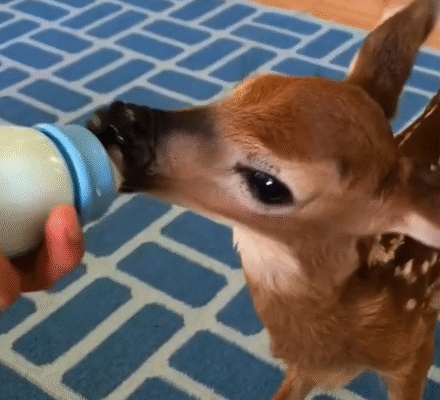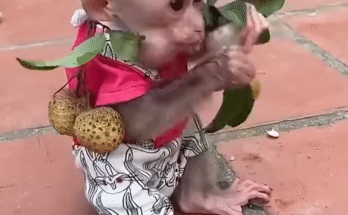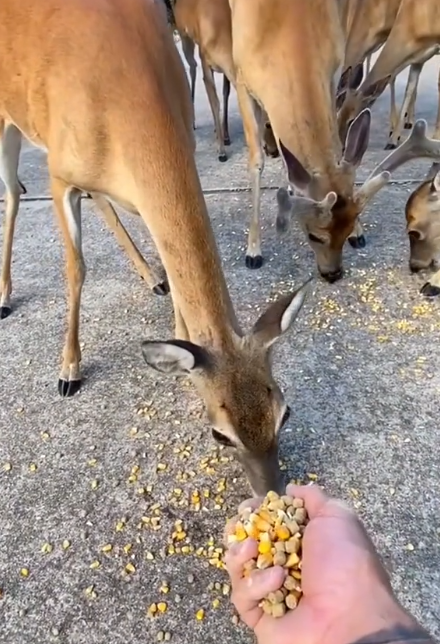
It was early morning in the heart of the rainforest, a time when golden rays of sunlight filtered through the canopy, dancing across the forest floor. Birds chirped cheerfully, and insects hummed in the background. But the serenity of the jungle was suddenly interrupted by a strange sound—a desperate, high-pitched bleating echoing through the trees.
Ravi, a young forest ranger stationed at the wildlife reserve, had just begun his daily patrol. He froze in his tracks when he heard the cry. Years of experience told him something was terribly wrong. He adjusted his backpack, gripped his machete, and quickly moved toward the sound, pushing through thick vegetation and weaving between towering trees.
As he crept closer, the cries grew louder and more frantic. Then he saw it. A young fawn, no more than a few weeks old, was entangled in the powerful coils of a massive reticulated python. The python, nearly five meters long, had already begun constricting, wrapping its muscular body tighter around the baby deer’s small frame. The fawn kicked and struggled weakly, its strength waning by the second.
Ravi knew time was running out. A python’s squeeze could kill within minutes, sometimes seconds, and if he didn’t act fast, the poor creature would be lost. But intervening meant putting himself in serious danger.
He didn’t hesitate.
With adrenaline surging through his body, Ravi took a deep breath and shouted to distract the snake. The python raised its head slightly, tongue flicking the air as it sensed movement. Then Ravi sprang into action. He ran forward, swinging his machete carefully but forcefully at the thick coils.
The blade struck, and the snake recoiled slightly. It loosened its grip for just a moment, but that was enough. Ravi reached in, grabbed the struggling fawn by its hind legs, and yanked it free. The python hissed and struck at him, but he managed to pull both himself and the baby deer out of reach just in time.
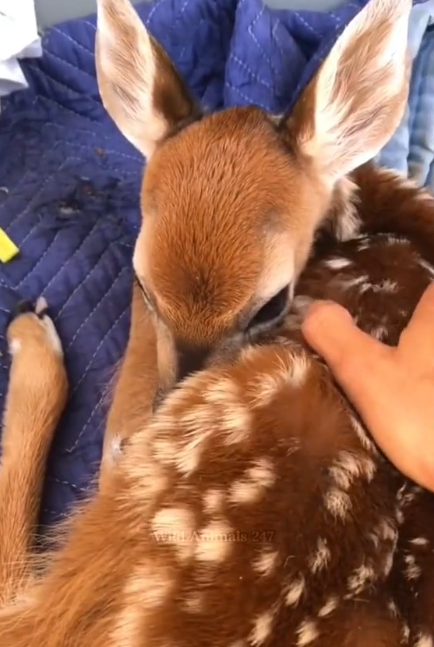
The deer collapsed on the ground, shivering, covered in dirt and bruises. Its breathing was shallow but steady—alive, just barely. Ravi quickly assessed the damage. Thankfully, there were no broken bones, but the fawn had deep impressions across its body from the snake’s coils. He knew the fawn needed help fast.
Carefully cradling the tiny creature in his arms, Ravi began the long trek back to the ranger station. The hike was difficult—over uneven terrain, through underbrush, across narrow trails—but he moved with urgency and purpose.
Back at the station, Ravi called for the on-site veterinarian, Dr. Maya, who arrived within minutes. She cleaned the wounds, gave the fawn fluids, and monitored its breathing. “It was close,” she said, shaking her head. “But thanks to you, it has a chance.”
The baby deer was placed in a small enclosure with soft bedding, food, and water. Ravi sat beside it for hours, watching as the fawn slowly regained some strength. It lifted its head, blinked at him with large, dark eyes, and let out a soft, grateful bleat.
Over the next few days, the little deer—whom Ravi affectionately named “Tika”—began to heal. She started to walk around, eat on her own, and show signs of playfulness. Ravi visited her every morning and evening, growing deeply attached to the gentle creature he had saved.
But as much as he cared for her, Ravi knew Tika didn’t belong in a cage. She belonged in the wild, where she could grow strong and free. The goal was always rehabilitation and release.
Weeks passed. Tika grew stronger, faster, and more alert. She could now sprint around the enclosure, leap over small obstacles, and forage confidently. The day finally came when Dr. Maya declared her ready for release.
On a misty morning, Ravi and his team transported Tika back into the depths of the forest—close to the area where she had been found, but far from the known territory of dangerous predators.
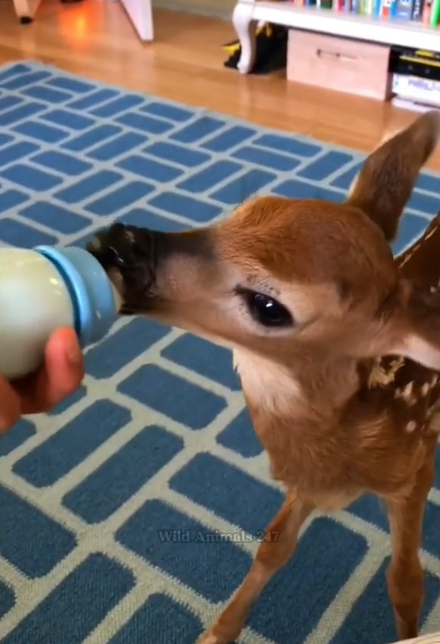
Ravi opened the gate of the transport cage and stepped back. Tika hesitated, then stepped out cautiously. She sniffed the air, looked back at Ravi for a moment—as if to say thank you—and then bounded off into the trees, her white tail flicking like a flag of freedom.
The forest swallowed her up, and Ravi stood silently, a mix of joy and sadness welling up inside him. He had saved her life, nurtured her back to health, and set her free. There was no greater satisfaction.
The Ending
But the story didn’t end there.
Months later, during another routine patrol in the same region, Ravi found himself near a forest clearing where deer often gathered. He paused and observed from a distance. A small herd of deer was grazing peacefully. Among them was a young doe with a unique, heart-shaped mark on her flank—just like Tika’s.
Ravi’s heart leapt. It was her.
Tika stood tall and confident among her kind. She had not only survived but thrived. As if sensing his presence, she turned her head in his direction. Their eyes met across the clearing. For a brief second, the forest went still. Then she turned and gently nudged a smaller fawn standing beside her—her own baby.
Tika had become a mother.
Ravi couldn’t help but smile. The little fawn he had rescued from death was now giving life herself. It was a full circle—nature’s quiet but powerful way of expressing gratitude.
He didn’t move closer. There was no need. She was free, wild, and right where she belonged. With one last look, Ravi turned and walked away, his heart full, knowing that sometimes, the smallest act of bravery can ripple through generations.
And in the heart of the jungle, where danger and beauty intertwine, a ranger and a deer had shared a bond that would live on—unspoken, unseen, but forever remembered.
